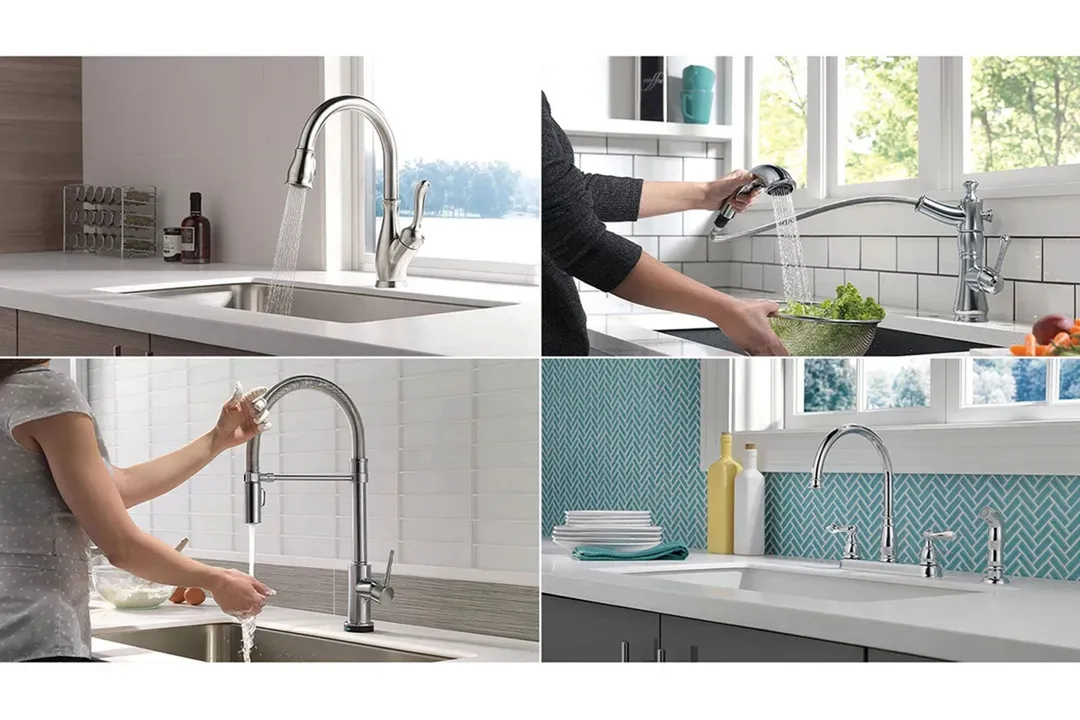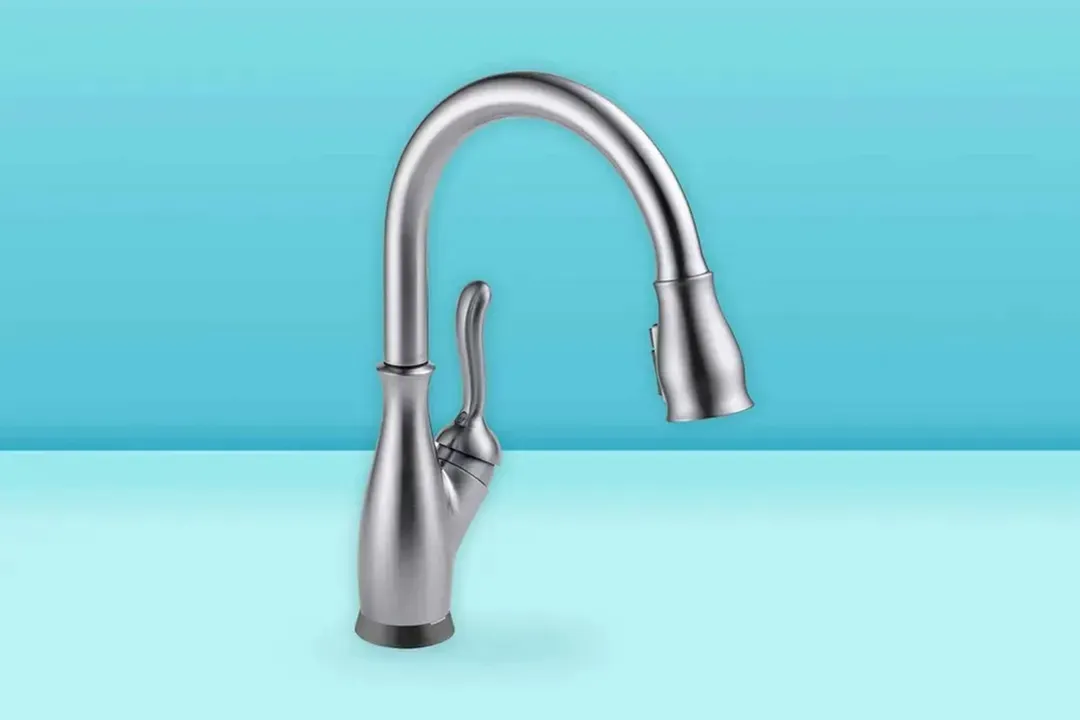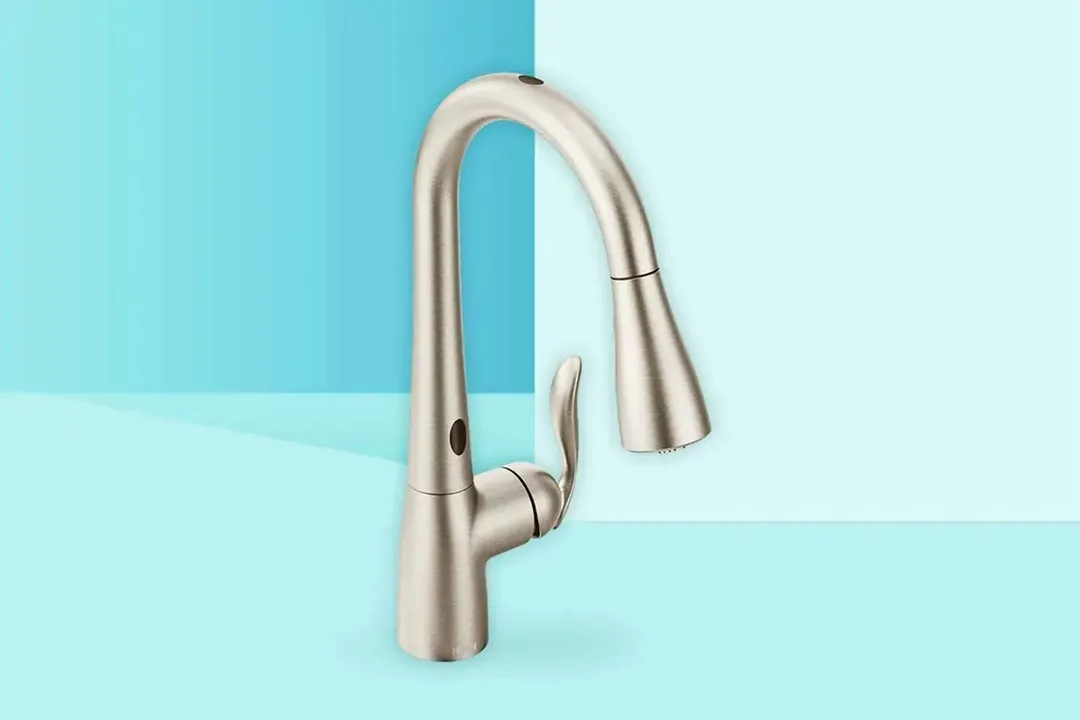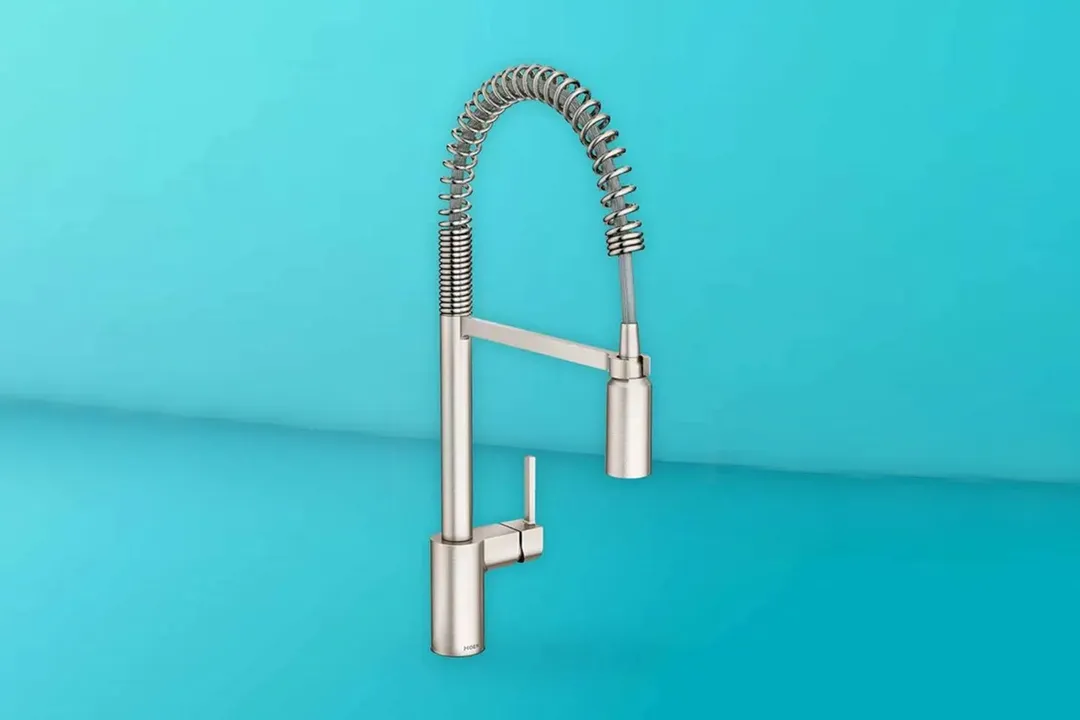Our recommendations are made independently through Research & Testing. We may receive commissions from purchases made via our links.
Basic Types of Kitchen Faucets and Their Distinctions of Operation
As a matter of fact, keeping in mind the most basic types of kitchen faucets may help you quite a deal in housing. Especially since kitchen is a space of crucial impact in advancing living condition.
As a matter of fact, keeping in mind the most basic types of kitchen faucets may help you quite a deal in housing. Especially since kitchen is a space of crucial impact in advancing living condition.
Now, many of you may think, c’mon, it’s just a fixture.
Woo, stop it right there my dear fellows. Because we are talking about one of the most hardworking units within your kitchen space.

5 Most Popular Types of Kitchen Faucets
Faucets, for years, have come a long way to be more than just some vapid meet-the-eye out-there’s to sit tight at the background. Choosing the suitable faucet type is only to ensure the fullest revels for you at home and chores to be done with ease.
People usually pay more attention to the hose and valves’ designs while encountering them at stores. To simply break it down, here are the 5 most popular types of kitchen faucets you may find matched with your needs.
1. Pull-down faucet

Pros
- Accessibility to small corners and difficult spots.
- Prevent splashing at its best; is most preferred for big and deep sinks.
- Has the most breathtaking designs than any other type.
Cons
- Inconvenient to navigate in hollow sinks.
- Limited stretching distance as can only be pulled downwards.
Pull-down faucet is known as the most popular type of kitchen faucet nowadays. Its most significant distinction is a goose-neck spout, being snaked around by the head of the hose as an extension.
Dealing with a big pile of dishes and pots while keeping the the sink spotlessly clean is always a challenge. That's why all the most favorable pull-down faucets try to best utilize the experience with the extendable spout by adopting the long hose and the self-retract sprayhead.
This sure hits the jackpot as it maximize the usability of these faucets. You can reach literally every dirty spot, rinse out all over the sink, and still maintain a clean and dry countertop space.
Drills the pros every use for sure.
2. Pull-out faucet
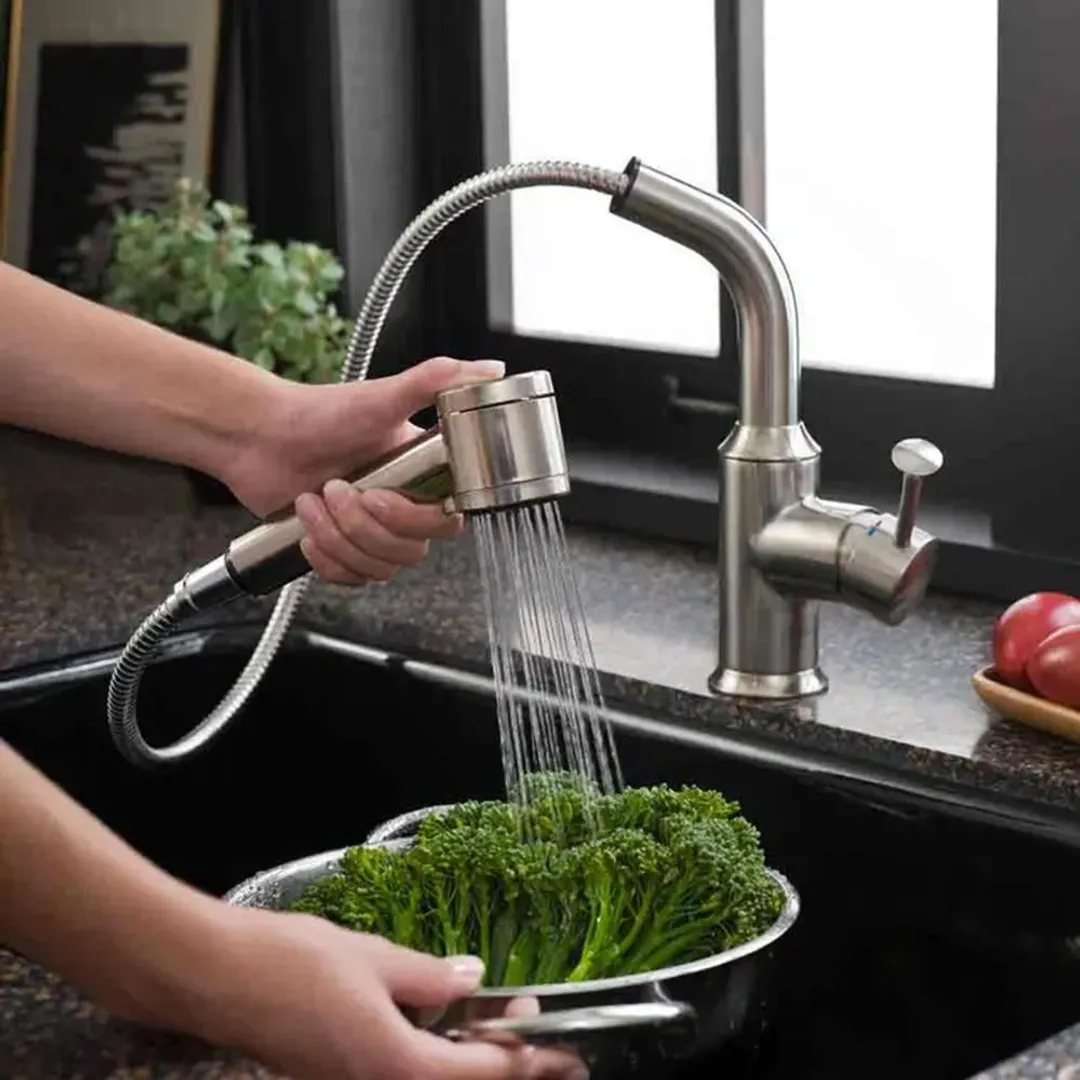
Pros
- Perfect choice for hollow and small sinks.
- Dizzying array of styles > designs.
- Great litheness with long hose and detachable handle.
Cons
- Easily causes splashing.
Pull-out faucet works exactly as how it was named - it comes with detachable handle that can actually be pulled out.
This style faucet also allows you to remove the spout head and drag it to as many places as you like. It comes with much similarity to pull-down faucet, but there are still differences in particular traits to be broken down.
Basically, the spray hose will come in a straight line towards you, and not downwards as with the pull-down faucet. This feature will give you freedom to displace it among sinks and countertop all at ease.
So how does this help weed out your snags? Mostly because you can fill large pots and pans without having to get them fit into the sink. That’s also why it is mostly preferred to kitchens with smaller sink space.
The tap is also built together with a finger-friendly button to adjust water flow strength and temperature. Its low-arching feature also allows you to direct it effortlessly with just one hand.
Types of taps in the market are multiform nowadays, ranging from chunky to bony, but all are composed to be easily grabbed.
3. Single-handle faucet

Pros
- Simple installation.
- Very reliable and doesn’t cost much in repair.
- Easy to navigate.
Cons
- Takes a certain amount of time to switch temperature.
Single-handle faucet is hands-down the most common faucet type you can find out there. This faucet style has been identifiable on the market under many configurations such as ball, ceramic disk or cartridge.
Whatever it is, you should just look no further than its own utilization – simple and straightforward. With just a singular lever that can be switched side-to-side or up-and-down, you are free of choices on water temperature.
If you’re still puzzled on various single-handle faucet models: The main differences only lie at its navigating motions and how the system works inside to control water flow and temperature mix.
4. Double-handle faucet

Pros
- Separate controls and connections for hot and cold water, saves time to adjust temperature.
- Still available in use even if one handle is broken.
- Simple installation.
Cons
- Can be pricey in repairing or replacing separate parts.
And there it is, another oldie to the single-handle faucet above.
This double-handle faucet often clings to utility sinks chiefly because of separate connections and regulations for hot and cold water stream. It works pretty much similarly to the other ‘single’ dude, but you see, two might be better than one in certain cases.
Double-handle faucet is available both as compression washers and cartridge faucets. To simply cut it down between these two: You have your options here between tightening down the switch or just smoothly shifting the handle to turn the water off.
As with variation in models, there are countless of different types of taps in the market. Most of them are in cylinder shape, with either rounded ball-shaped head or four-sided figure. Gooseneck taps are also much in vogue thanks to its elegant and commercial look.
5. Hands-free / motion-detect faucet

Pros
- Most convenient. Quick and in good order.
- Prevents contamination and saves time in cleaning.
- Design flaws are fixed on point; stunning, up-to-date and eye-catching
Cons
- Most expensive type of faucet.
- Difficult to repair due to complex system.
Here comes the most leading-edge innovation of the day! Just exactly how it’s called, hands-free faucet is operated by placing a sensor inside the main tap’s body to identify movements.
Let’s think about it.
Imagine yourself, being stucked in an eerie messy pantry, hands get mixed up in grease, food juice and baker’s yeast. Worse, your children are yelling and splashing their cereals, your visitors are getting bored of waiting out at the guest room.
Then there’s this faucet type using motion detecting technology, and you can finally heave a sign of relief.
By being able to response accordingly to hands or even utensils, it really packs a punch in cooking & cleaning process. Some latest models may also be composed with a water filter for best hygiene. All you need to do is hover. Wiggle waggle.
The top-notch hands-free faucets deliver not only a whole different level of convenience, but also an awe-inspiring appearance. Perfect for those who put impression first when it comes to house decorating.
To be honest, suiting your needs should forever be the top priority in housing. As come together, durability and reliability are not exceptions either when it comes to types of kitchen faucets.
Oh, whatever. Just get yourself packed up in this modern technology faucets world. And don’t forget to share your experiences with us!
About your tip
Luna Regina is an accomplished writer and author who dedicates her career to empowering home cooks and making cooking effortless for everyone. She is the founder of HealthyKitchen101.com and HealthyRecipes101.com, where she works with her team to develop easy, nutritious recipes and help aspiring cooks choose the right kitchen appliances.



